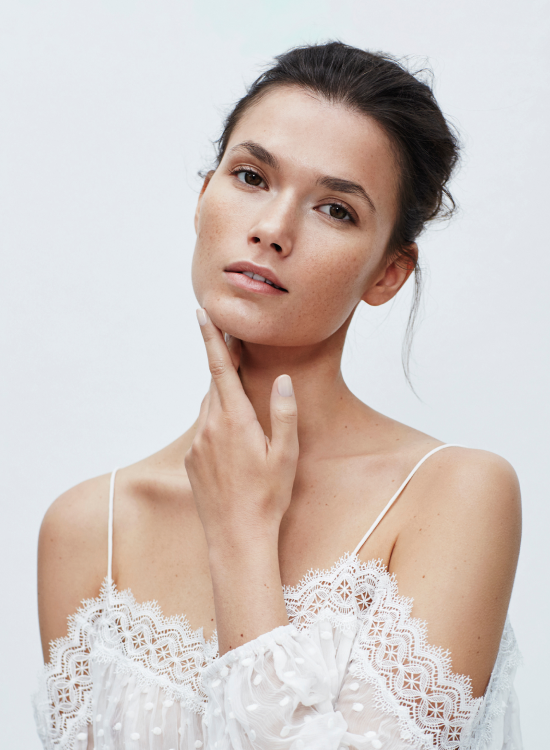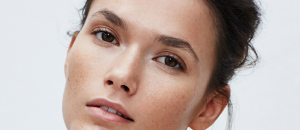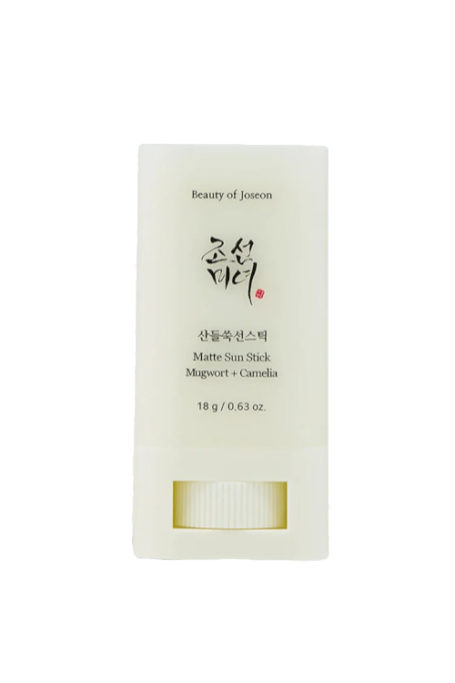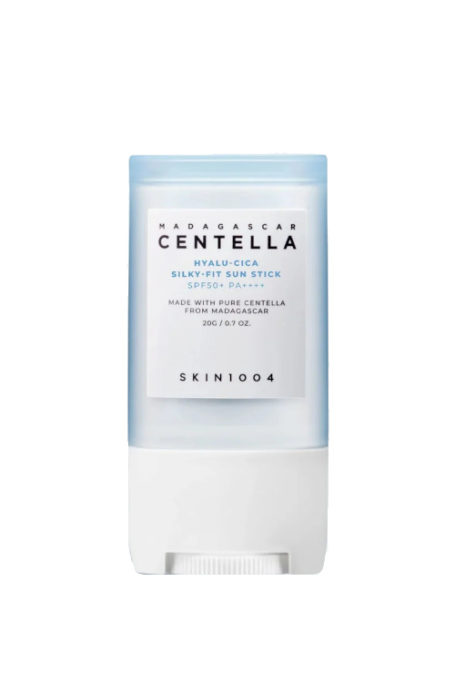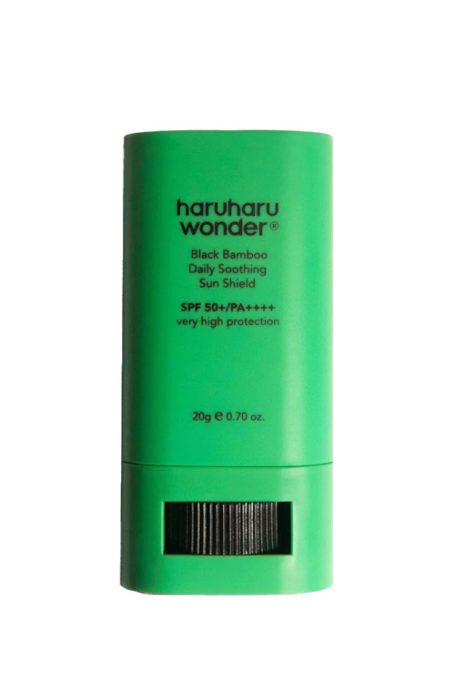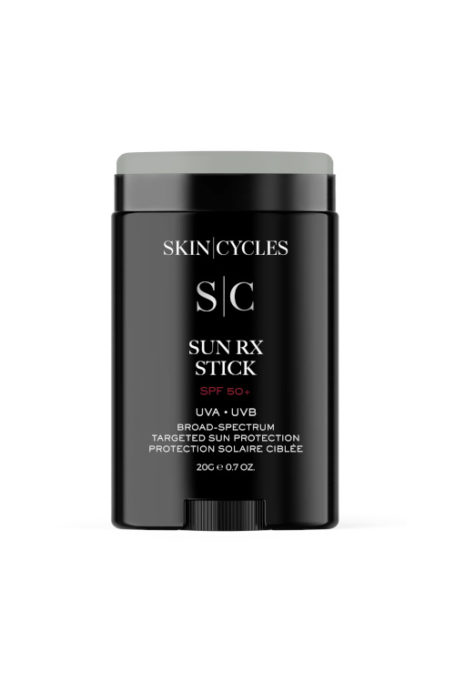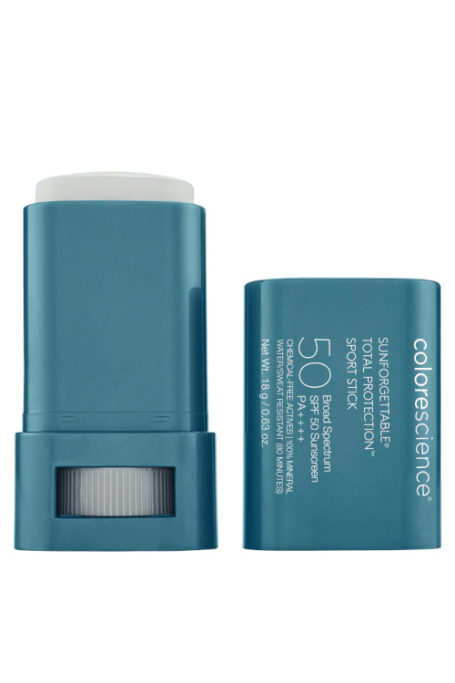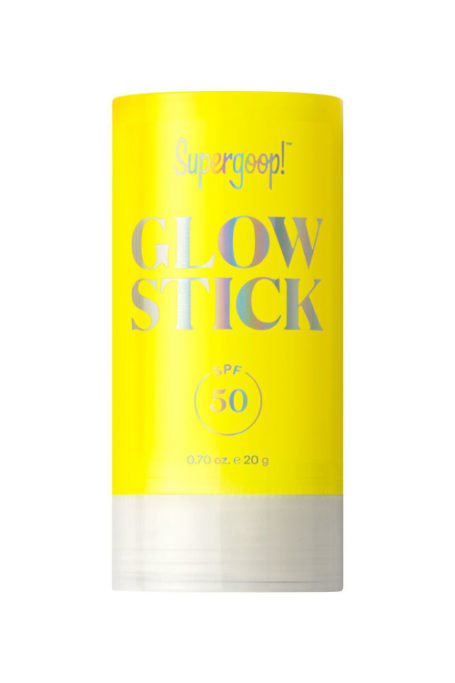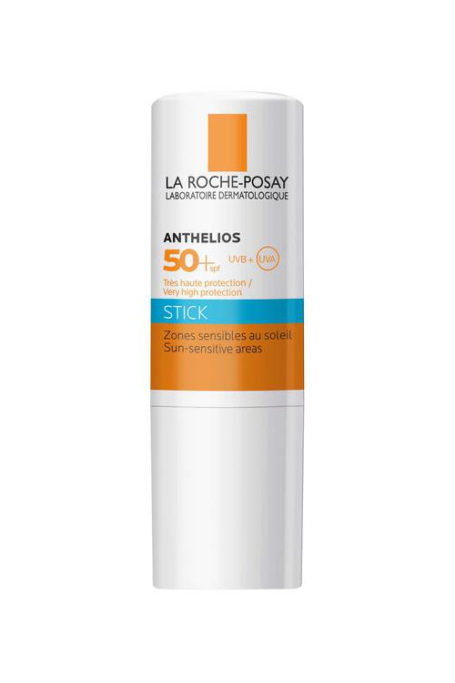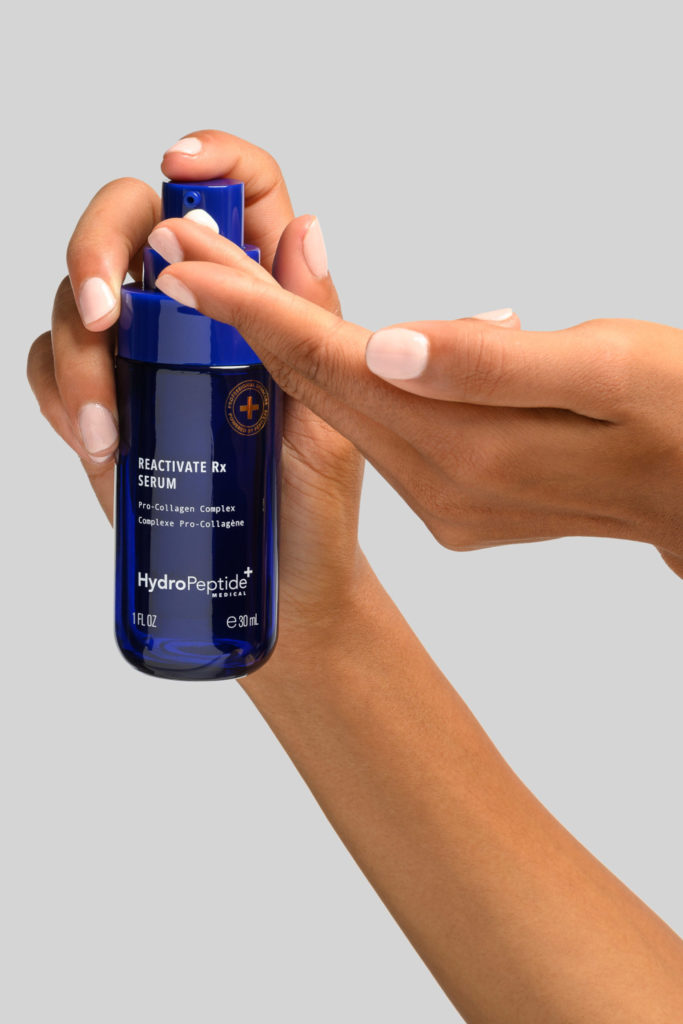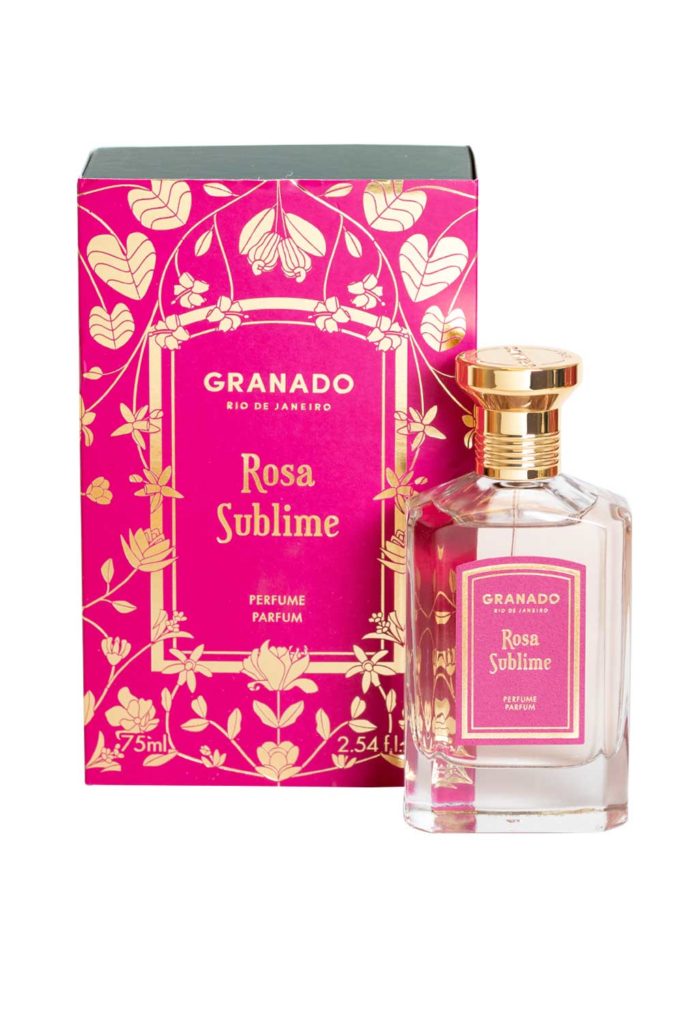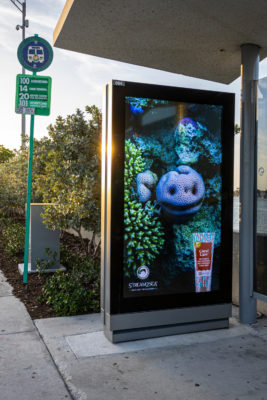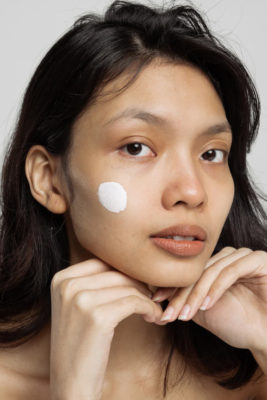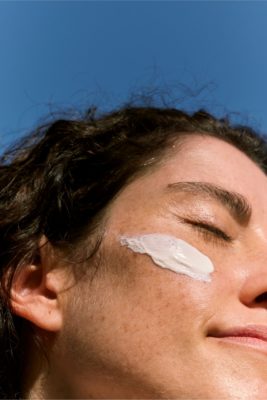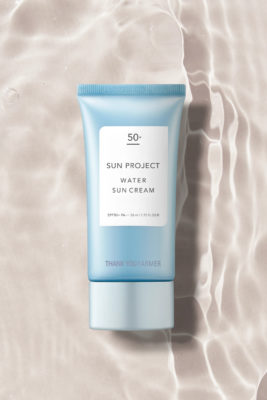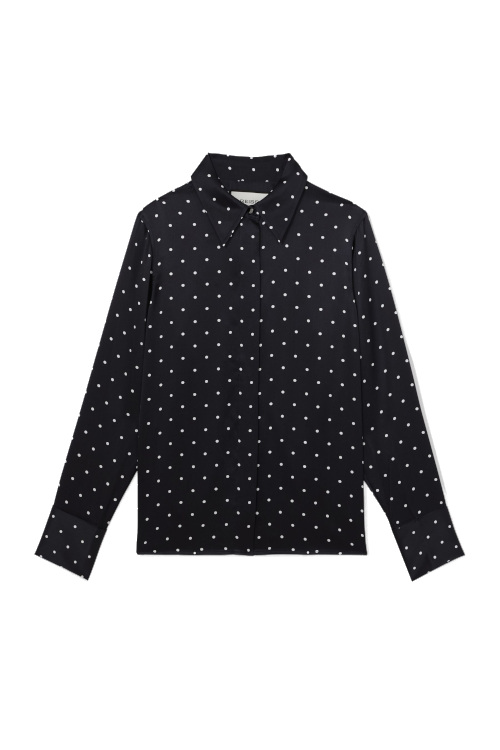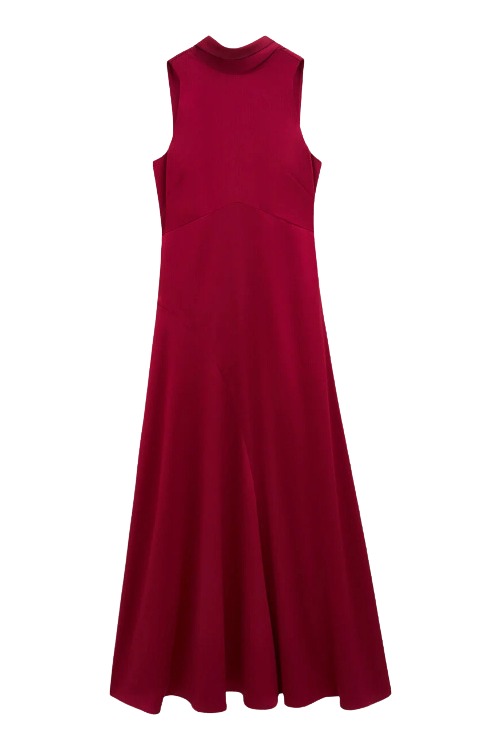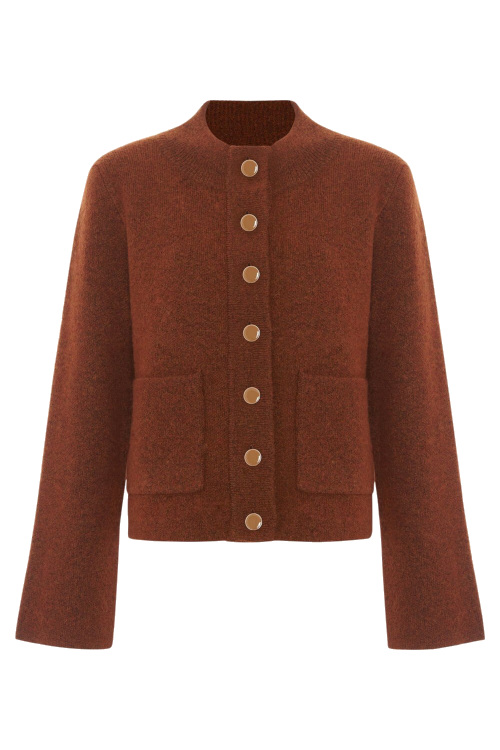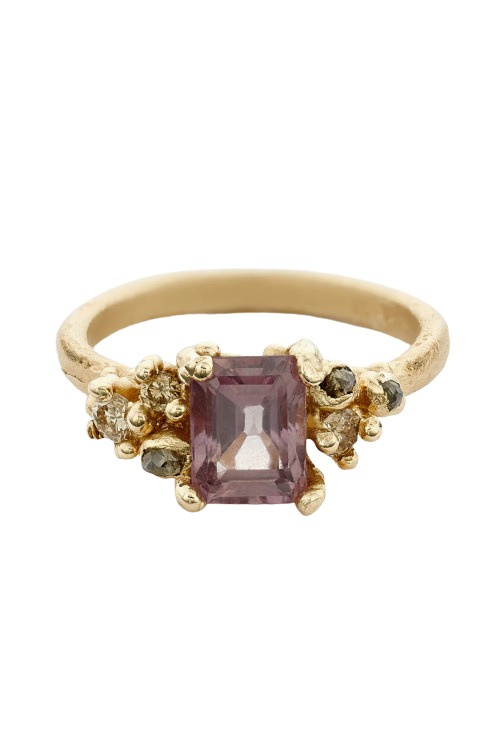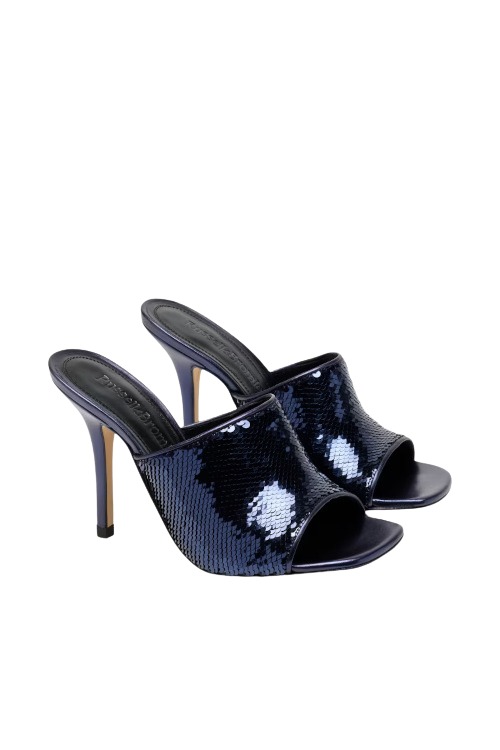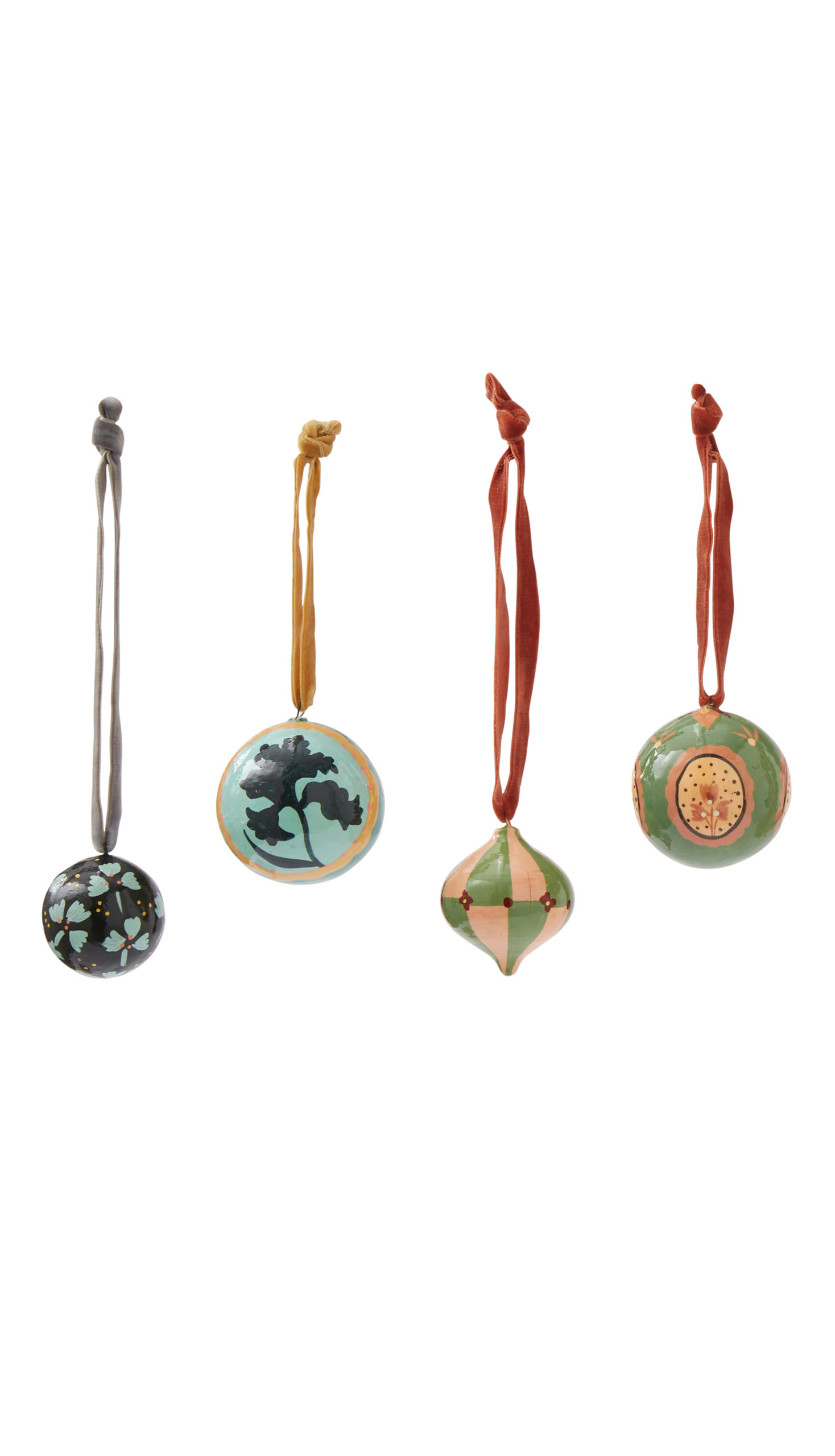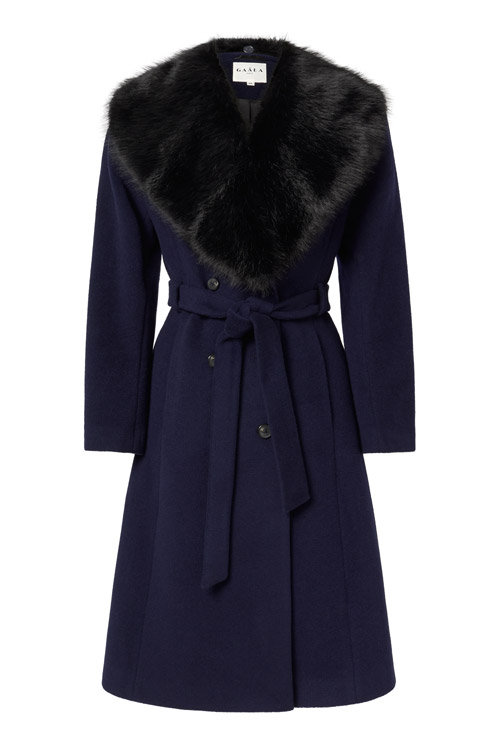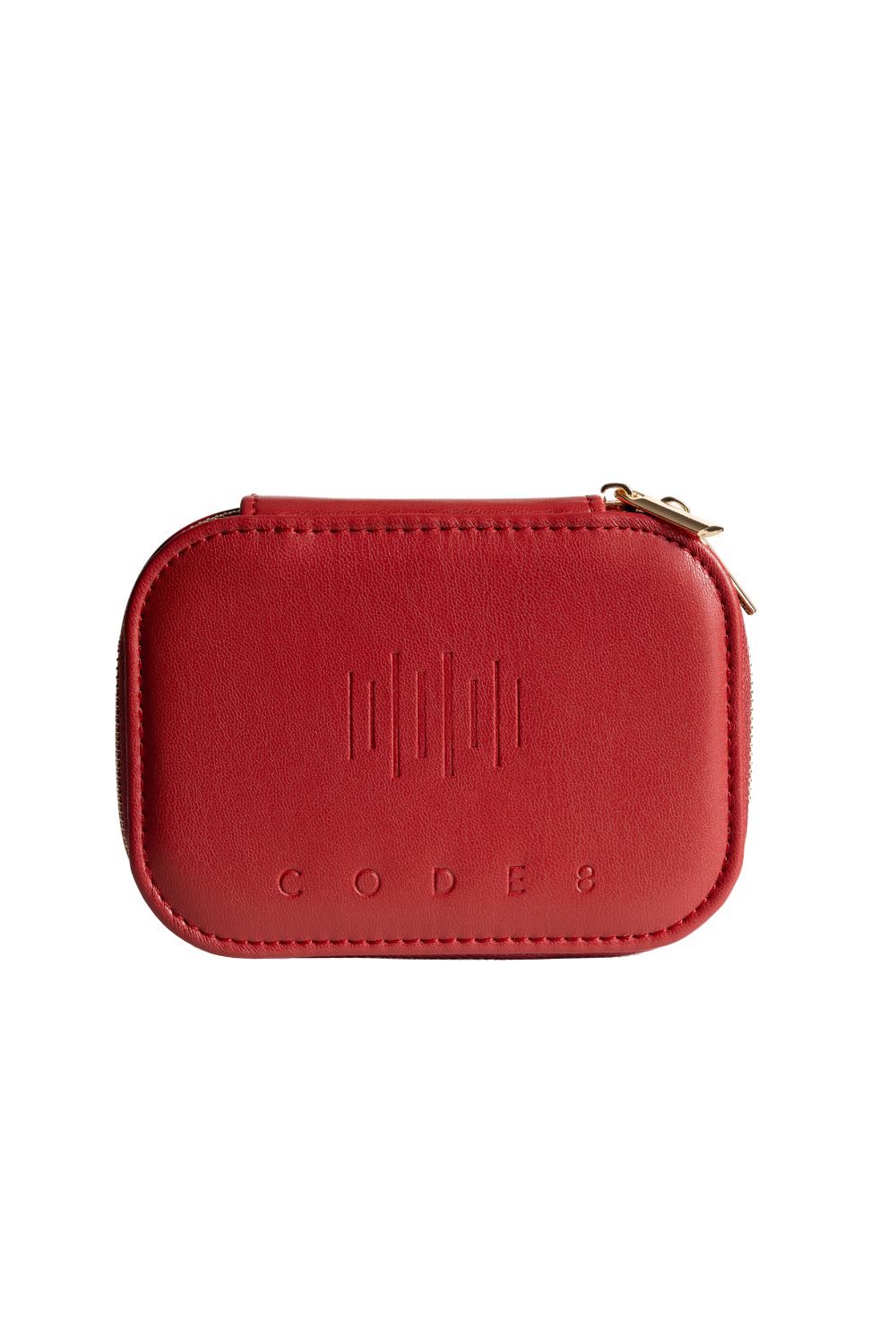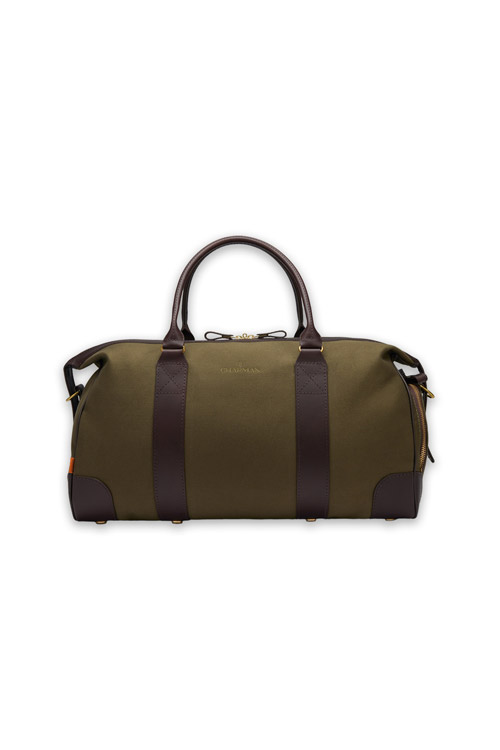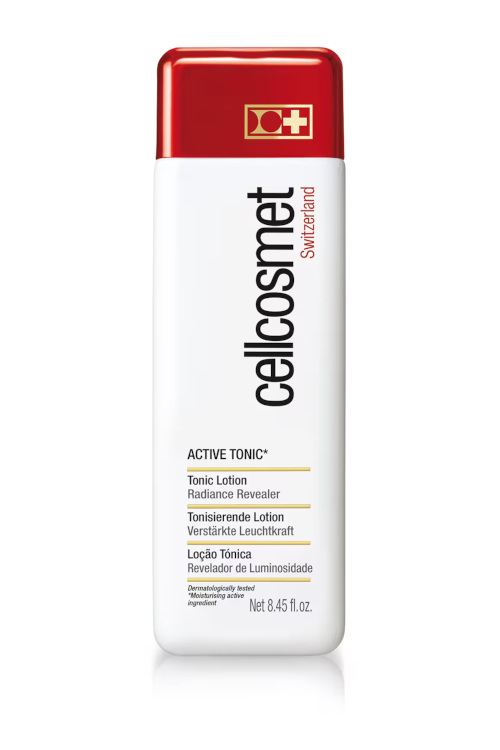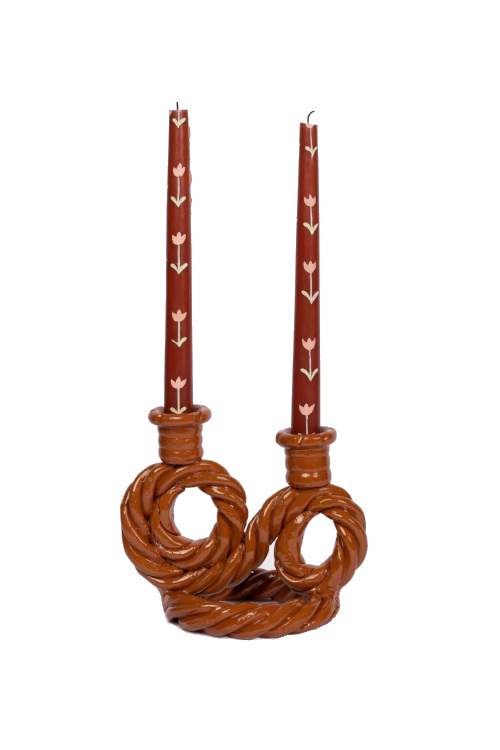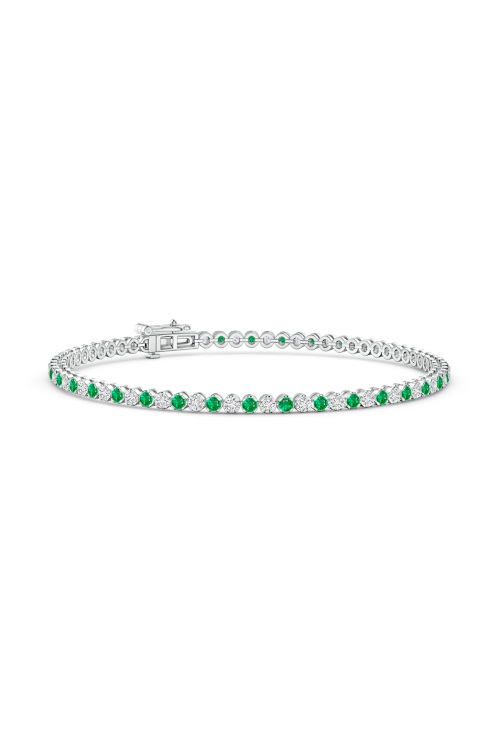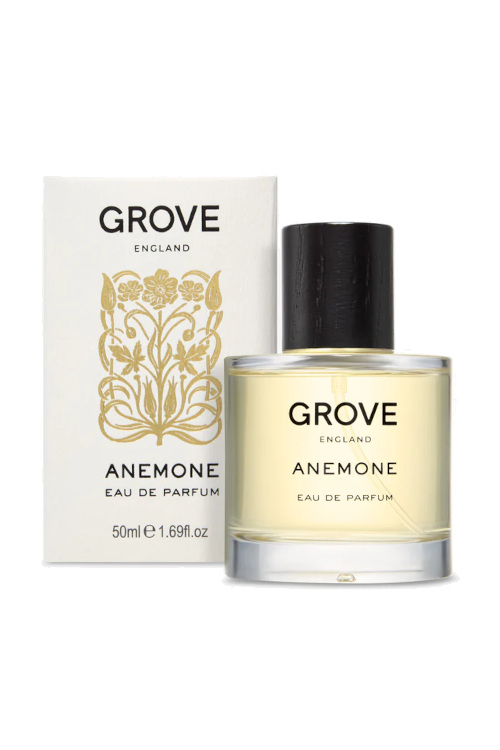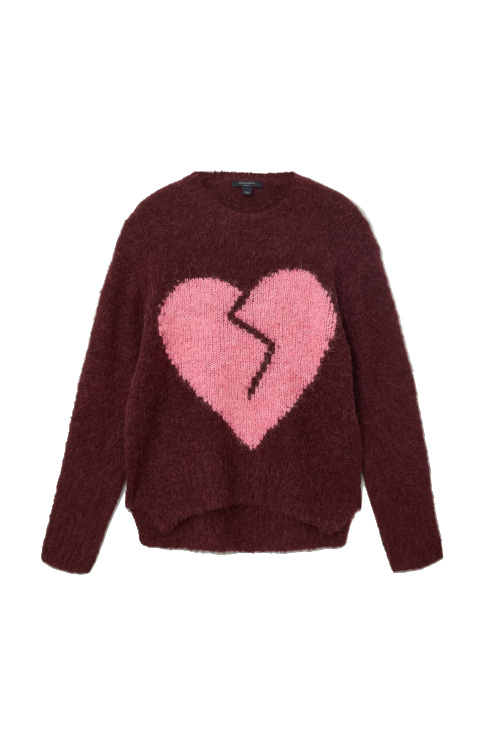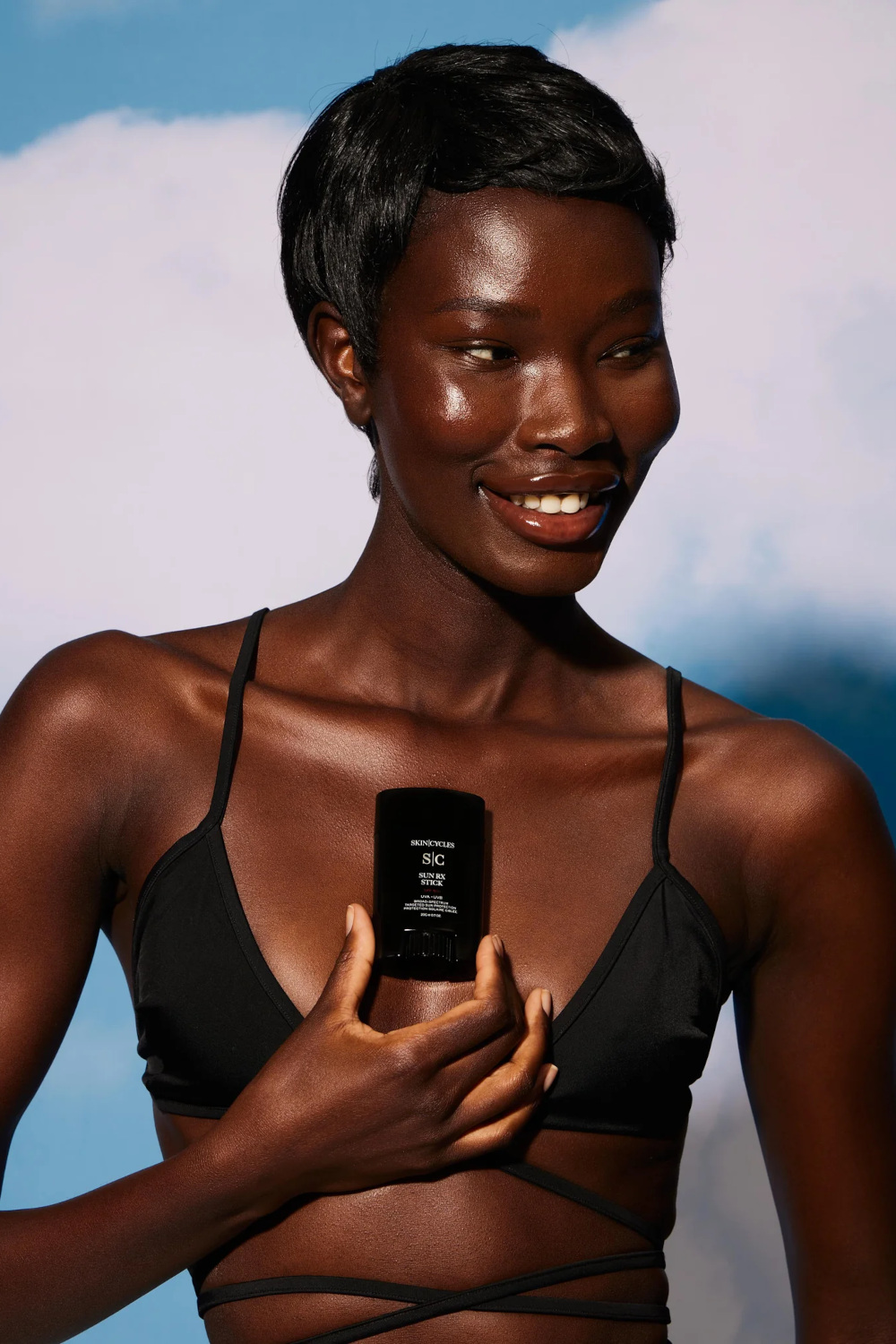
Is A Sunscreen Stick Really Better Than Sun Cream?
By
5 months ago
Meet the K-beauty craze sweeping through the SPF aisles
When it comes to SPF, we’re all in agreement that you can never have too much of it – especially in summer. But while most of us are pretty good at setting a base layer down before venturing out of the house, those all-important top-ups are often left forgotten. Cue, the sunscreen stick. Designed for quick re-application, this form of sun protection is quickly picking up speed online. Below, we ask skincare experts everything we need to know about them, and round up our favourites on the market right now.
What Is A Sunscreen Stick?
‘A sunscreen stick is a solid-format sun protection product, usually packaged like a deodorant stick or lip balm,’ explains Alice Henshaw, founder of beauty label SkinCycles. ‘It contains UV filters suspended in a waxy or balm-like base, allowing precise application without liquid mess or residue.’
But the main factor that sets sunscreen sticks apart from other SPF products, Alice adds, is the application process. Unlike liquid formulas, which needs to be rubbed into skin, a stick formula can be applied directly onto skin via the application. In other words: no need for messy fingers.
It’s this benefit, plus a recent wave of social media hype, which has made sunscreen sticks all the more popular. ‘They’ve recently grown in popularity thanks to the increasing focus on daily sun protection and the demand for products that fit busy lifestyles,’ adds Alice. But one key piece of pop culture seems to be driving the new SPF wave: ‘K-beauty trends helped propel sticks into the mainstream, making them must-have tools for touch-ups that don’t disturb makeup.’
‘Sunscreen sticks have been popular in the likes of South Korea and Japan for years, thanks to the skincare innovation in those countries and their emphasis on easy and elegant protection from the sun,’ adds Melody Yuan, founder of K-beauty specialist Skin Cupid. ‘The K-beauty approach prioritises lightweight textures, convenience and formulas that work alongside your make-up. The Western market, including the UK, has only recently caught on, but with how fast trends tend to get diffused through TikTok and Instagram, they’re growing in popularity very quickly.’
What Are The Benefits?
As mentioned, the key benefit with sunscreen sticks is the convenience. ‘What’s great about them is that they’re completely mess-free, easy to carry around and perfect for touch-ups throughout the day on areas you might have missed during your morning application,’ agrees Melody. ‘It’s also a year-round essential for your handbag, not just in the summer, so that you can reapply SPF when you’re on the go without disrupting your makeup or getting your hands messy.’
‘A sunscreen stick is good because you don’t need to use your fingers to apply the product and don’t need to wash hands before you apply the sunscreen,’ adds Dr. Inna Szalontay, dermatologist and founder of Libi & Daughters. ‘If it was in a jar or tube, you would need to wash your hands and apply it with your fingers.’
But that’s not the only thing to consider. As Alice notes, some other key benefits include:
- Mess-free application – no drips, spills or white cast
- Portability – perfect for handbags, gym bags, or travel
- Precise coverage – great for delicate or high-risk spots like under eyes, ears, lips or scars
- Less hand contact – hygienic for reapplications on the go
@natalie_oneillll The easiest way to make sure your neck matches your face in 15 years xo #sunscreen #skincarehacks #beautyhacks #skincaretips ♬ original sound – Natalie O’Neill
How To Apply A Sunscreen Stick
You can apply a sunscreen stick anywhere you would apply regular sun cream, but our experts note that this is a product that works better for targeted rather than large areas. Think of it as a focused layer of protection for a specific spot, or a touch-up.
‘Areas such as nose, ears, lips, backs of hands are a good place to use it,’ recommends Dr Anatalia Moore, NHS GP and cosmetics dermatologist. ‘And as the product itself is thicker it tends to stay put a bit more, so it can be great if you are doing some sweaty sport or swimming. But, importantly, the chemistry is still the same as a classic SPF – so if we are being perfect, it requires two-hourly reapplication.’
With this in mind, follow the usual rules: regular reapplication, especially after swimming, sweating, or towel drying (even if the formula is water-resistant).
And regardless of area, it’s important to be generous with your application. ‘To ensure adequate coverage you need to swipe across the skin around four times and then blend in,’ she adds. ‘As the product is firm, and deposited in “streaks”, this leads to one of its main downsides: inadequate coverage. As it feels heavier, people tend to not deposit enough in the first place, and then miss areas when they are blending in. This is why I tend to say it is useful for isolated areas such as backs of hands, ears, nose and lips – but for coverage of a wider area it is quite limited.’
@drdrayzday Shiseido sunscreen stick, like any sunscreen stick, is prone to skip areas that can leave you vulnerable to sunburn. Make sure to do multiple passes & then rub it in, so as to get a good layer. #sunscreens #spfstick #shiseido #dermatologist @Stephanie Ella ♬ original sound – Dr Dray | Dermatologist
Can You Apply Over Makeup?
There’s some debate around this topic. Sunscreen sticks are typically marketed as SPF protection that can be applied over makeup, as Alice notes: ‘That’s one of their biggest perks. You should be able to glide the stick gently over your face, then tap lightly with fingers or a sponge to avoid disrupting your makeup.’
You’ll still get proper SPF protection in those targeted spots – but it’s worth noting that this isn’t without risk of disrupting any dirt left on the skin. ‘Applying any type of sunscreen over makeup because will clog the skin’s pores,’ emphasises Dr Inna. ‘Applying sunscreen over makeup will deliver toxins to the skin and pull the colour and chemicals from the makeup deeper into the skin, resulting in clogged pores that can lead to skin health issues including inflammation and acne.’
For best results, she recommends applying SPF to clean, freshly washed skin. ‘Sunscreen should never be applied on a dirty face,’she says. ‘The benefit of using a sunscreen stick is that you are not touching the product with your fingers while applying it, but you still need to make sure that your skin is freshly washed and clean before application. You also need to be mindful that the surface of the sunscreen stick is clean, which is something many people forget to do. If you apply sunscreen on top of what is already on the skin, including sebum, sweat, pollution, makeup or powder, it will push everything deeper into the skin, which can lead to long-term problems.’
Does It Work For All Skin Types?
It’s bad news for sensitive skin types, unfortunately – especially if the sunscreen stick being used hasn’t been cleaned properly. ‘Breakout prone and sensitive or irritable skin types should especially be aware of the potential for accumulation of dead skin cells, oil and microbes on the end of the stick,’ warns Dr Anatalia.
Instead, ‘healthy hydrated skin, more normal than dry, is the better skin type to use sunscreen sticks,’ says Dr Inna. ‘If you have any skincare concerns such as inflammation, eczema, psoriasis, contact dermatitis or rosacea, it’s better to consult with a healthcare practitioner before you buy any type of sunscreen, because they will be able to advise on which brand and product will suit your skin best.’
@ashleyleiz Replying to @gloria🎀 Same brand, same SPF coverage, but still different products lol. The stick is matte whereas the relief sun is glowy so just keep that in mind! #beautyofjoseon #beautyofjoseonsunscreen #beautyofjoseonsunstick #uvcamera #sunscreen #spf #sunscreentest #spftest ♬ Sunset in Calabasas – Adrian
Do You Need To Clean A Sunscreen Stick?
‘Yes, especially if you’re applying it over makeup or sweaty skin,’ emphasises Alice.
Dr Anatalia is in firm agreement. ‘Dust, dirt and pollution sits on our skin, and if we have not cleansed thoroughly before reapplication (as we unlikely will have when out and about) these will transfer to the product,’ she explains. ‘Then when we use it again it will be deposited back on the skin. These all have the potential to inflame skin, so I advise to wipe the end of the stick with an antiseptic product roughly every couple of applications. This could be an antiseptic wipe, or spritzing a makeup pad with hypochlorus spray and then wiping off the top layer of dirty product .’
Sunscreen Stick vs Sun Cream: Which Is Better?
While there isn’t necessarily a ‘better’ form of SPF if both products use the same ingredients or formulas – what matters here broad spectrum protection – but the limitations of application do give sun cream a slight edge.
‘Despite sunscreen sticks offering convenience, the firm texture offers up another down side,’ adds Dr Anatalia. ‘For oily skin types and for comfort of feel, or sitting under make up, the thicker texture sits heavily.’ She also points out that while not all, ‘many sunscreen sticks are partly mineral SPFs; utilising zinc oxide to provide UV protection. The more zinc oxide in the product then the more white cast. For paler skin types this is tolerable but for darker skin tones this will mean a more streaky appearance unless blended properly and even then may not leave a desirable tone.’
Our experts instead recommend using a liquid SPF for the first application of the day, and topping up with the stick (or using it to go in on sensitive areas) throughout the day. ‘While sunscreen sticks are great as portable top-ups that you can carry around with you, they shouldn’t be your only source of SPF,’ says Melody. ‘You need a full layer of sunscreen in the morning to ensure thorough coverage on all areas of your body.’
‘They can be less uniform than lotions if used alone,’ adds Alice. ‘I recommend using them in combination with your regular sunscreen routine, especially if you’re spending prolonged time in strong sun.’
Shopping Tips: What To Look Out For
The biggest factor to consider with any type of SPF is protection. ‘While consumers usually only look for SPF as the core protection offering (which shields against UVB rays), other factors include broad-spectrum protection, which protects you against both UVA and UVB rays,’ says Melody. ‘You also need to look for any photostable filters that won’t degrade in sunlight, which a lot of Western sunscreens contain.’
Melody also recommends checking the texture of the stick itself before investing. ‘Some can feel overly greasy,’ she warns. ‘The best ones should glide onto your skin smoothly and leave a natural finish without ruining your makeup.’
Some other things to take into account include:
- Choose broad-spectrum protection against both UVA and UVB rays
- Opt for SPF 30 or higher
- Pick textures that suit your skin – some are matte, some are glowy and some are hydrating
- Look for water resistance if you’re active or outdoors often
- If you’re sensitive to fragrance, check the label as some sticks are scented
- Non-comedogenic options are best for acne-prone skin
Tried & Tested: The Best Sunscreen Sticks For Summer 2025
How We Pick Our Products: At C&TH, we take skincare seriously. When collating these lists, the team test and trial a number of products – taking into the account not just the results of regular use, but also the feel, smell and look of the product, as well as its luxury appeal and whether the brand behind it are taking steps to give back to both people and planet. We also feature product recommendations from the experts mentioned above. The process might take a little longer, but it just ensures that we’re giving the spotlight only to the brands and products that are really worth the investment.
Beauty of Joseon
Matte Sun Stick: Mugwort+Camelia SPF 50+ PA++++, £19.95
Best for: viral hype
‘This sun stick went viral online, and you’ll realise why when you try it for yourself,’ says Melody. ‘Combining high sun protection with multiple skincare benefits, it is an ideal sunscreen for oily and combination skin thanks to the mattifying Silica in the formula, which works to control shine and ensure a non-greasy finish. Soothing mugwort and green tea extract also feature in the formula, which help to nourish the skin while you’re wearing it. Free from essential oils and artificial fragrances, it’s suitable for sensitive skin, too.’
SKIN1004
Madagascar Centella Hyalu-Cica Silky Fit Sun Stick SPF50+ PA++++, £18
Best for: oily/combination skin
SKIN1004’s non-greasy and silky formula is ideal for those with oily and combination skin, as Melody explains: ‘the formula contains silica to control unwanted shine. Its Hyalu-Cica Complex, which is a blend of hyaluronic acid and centella asiatica, also hydrates and calms any irritation. Grape and turmeric extracts also nourish the skin, while the jojoba oil adds moisture without heaviness. Melting into the skin for a transparent and fragrance-free finish, it’s long-lasting, sweat-resistant and travel-friendly – what more could you want?’
HARUHARU WONDER
Black Bamboo Daily Soothing Sun Shield, £14.80
Best for: vegan skincare
Another pick from Melody, she says this sunscreen stick is both vegan and offers broad spectrum protection. ‘The lightweight formula is invisible on the skin and ideal for daily wear. Reef-safe and free from any harsh chemicals, what also sets this sun stick apart is its AIR FENCE Technology, which is cooling on the skin and has a mattifying effect, while the fermented bamboo shoot extract hydrates and delivers antioxidants. What’s great about this sunscreen is that it’s suitable for anyone, even those with sensitive skin. It resists humidity, layers beautifully, and also has zero white cast or stickiness.’
SkinCycles
Sun RX Stick, £50
Best for: touch ups
For quick touch-ups on the beach or out in the sun, SkinCycles’ sunscreen stick is a gamechanger. The mineral formula offers broad spectrum UVA and UVB protection (with SPF 50+), and its water-resistant and non-comedogenic properties make it ideal for those risking the pool or struggling with slightly more sensitive skin.
Shiseido
Expert Sun Protector Clear Stick SPF 50+, £32
Best for: texture
The last thing you want from your SPF is a heavy, greasy feel – but luckily, Shiseido’s sun stick comes with all the right textures. Ultra-light and transparent, it glides right over skin (without leaving a trail of stickiness), leaving a nice silky feel. The addition of argan oil also helps hydrate skin while protecting it from the sun, hitting two birds with one stone.
Colore Science
Sunforgettable Total Protection Sport Stick SPF 50, £30
Best for: sensitive skin
Colore Science is known its wide range of SPF options catering for sensitive and rosacea prone skin, with its sunscreen stick offering protection against UVA, UVB, pollution, blue light and infrared radiation. It’s also hypoallergenic and non-comodogenic, and contains a variety of hydrating and soothing agents. Note that it will leave a slight cast at first, but you can blend out any lingering product fairly easily.
Supergoop!
Glow Stick SPF 50, £27
Best for: glowing skin
You often find makeup with skincare benefits, but what about skincare with makeup benefits? This oil-based sunscreen stick from Supergoop! easily doubles as a dewy highlighter, giving skin a luminous glow while offering broad spectrum protection. The go-to option for a radiant finish.
La Roche Posay
Anthelios XL SPF 50+ Stick, £11.20
Best for: all skin types
La Roche Posay’s hydrating formula is designed for all skin types (including sensitive skin), with a non-greasy feel that makes it easy to top up throughout the day. It’s slightly heavier than other sticks on the market, but it delivers strong UVA, UVB and infrared protection thanks to a blend of ecamsule and drometrizole trisiloxane.

